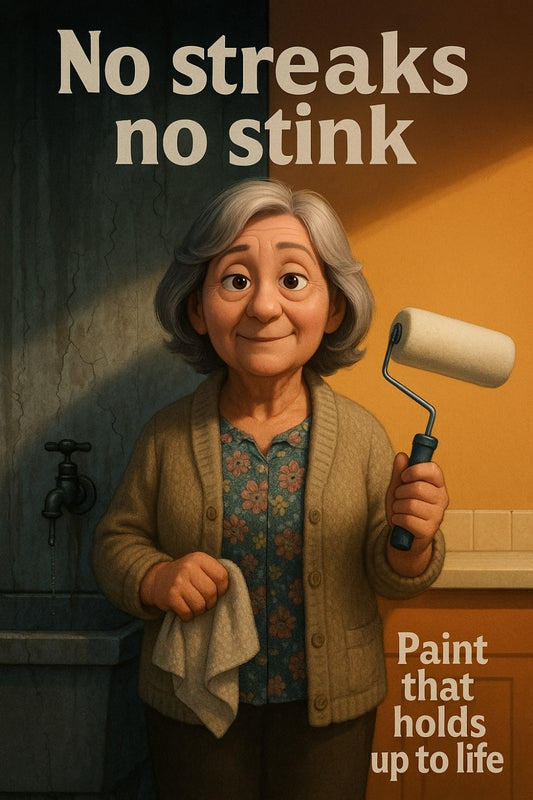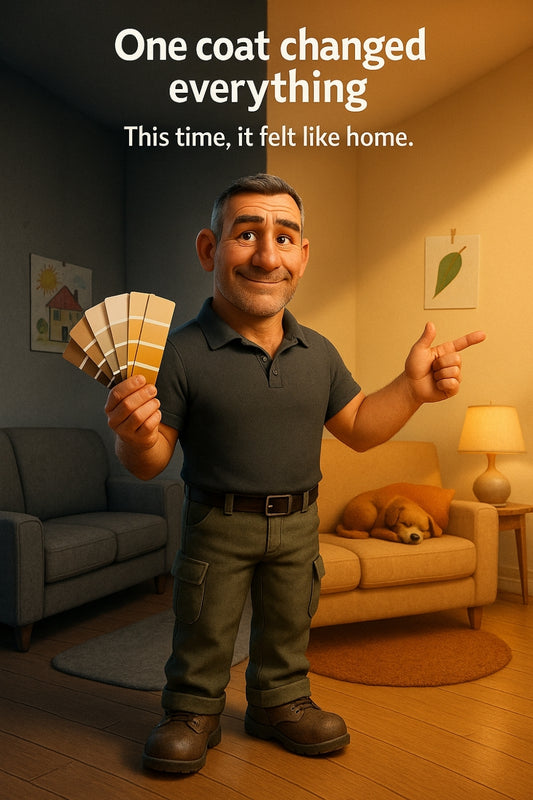
When to Use Haymes Ultralock on Difficult Surfaces
Share
How to Prime Like a Pro: When You Should Use Haymes Ultralock on Difficult Surfaces
Every DIYer reaches that stage in a painting project where excitement and overwhelm wrestle for control. You’ve picked your colours, you’ve got your brushes ready, and there's a vision dancing in your head. But then, your enthusiasm slams into a wall—literally. A glossy laminate, a knotted timber panel, or even an old oil-based enamel throws up its arms and says, “No thanks, not today.” That’s where Haymes Ultralock swoops in as your painting lifesaver.
Let’s Talk About the Gritty Stuff: Why Some Surfaces Are Just So Unkind
If you've ever tried painting over tiles, plastic trims, or previous oil-based paint, you’ll know it’s like trying to stick tape to dust—frustrating and never permanent. These “difficult surfaces” don't like to play nice. They repel water-based paints and often laugh in the face of stickability.
Here’s the good news though. You don’t have to wrestle with them anymore. Haymes Ultralock is made for all those tricky spots that regular primers just can’t connect with. Aluminium? Check. Ceramic? Yep. Melamine? You bet!
So When Should You Use Haymes Ultralock?
If you've found yourself stuck with any of the following, trust me—you don’t want to skip a good primer:
- Glossy tiles in a laundry room you're dying to modernise
- Laminate benchtops that need a refresh without ripping out the whole kitchen
- Timber trim coated in generations of unknown paints
- Cabinet doors that flat-out refuse to hold paint (they've clearly been ghosted before)
- Ceilings stained from the past (oh the joys of fixer-uppers!)
Even surfaces like MDF and PVC, notorious for being high-maintenance, will welcome your top coat after a layer of Ultralock. It’s almost like giving them a structured pep talk and a new sense of purpose!
The Secret Sauce: What Makes Ultralock So Effective?
Alright, without getting too “product pamphlet-y”, here’s what really makes Haymes Ultralock special. It’s a super grippy, interior and exterior primer-sealer with extreme adhesion and stain-blocking powers. It sticks where others fail, dries nice and quick, and covers stubborn marks like water stains and tannin bleed. Best part? It sets the stage for your topcoat to shine—literally and figuratively.
Tips for Getting the Best Out of Ultralock
- Prep properly: Give the surface a light sand where needed. And make sure it’s clean—really clean.
- One coat does the job: Unlike some other primers, Ultralock doesn’t require layers and layers for performance.
- Wait the right amount of time: It dries quickly to touch, but follow the full cure time before jumping into paint layers. Patience pays off here.
- Talk to someone who’s done it: That’s where we come in! Pop into Strathalbyn H Hardware and let’s chat about your project specifics before you start cracking open cans.
A Little Primer Can Go a Long Way
Your painting finish is only as good as your base. Using Haymes Ultralock is like laying down a firm foundation for a fabulous result. It’s not just “another step” — it’s the key step that saves you from chipping, peeling, re-painting, and saying a few colourful words along the way! Whether you're tackling recycled timber furniture from the op shop or redoing that weird faux-wood panelling in your den, Ultralock’s your mate for the heavy lifting.
Need Help Choosing the Right Primer?
We’ve got you. Come chat with us at Strathalbyn H Hardware. From seasoned DIYers to colour-curious first-timers, we’re here with friendly advice and expert guidance to help turn your paint plans into painted walls, cabinets, loungerooms and more. Your only job? Bring the excitement. We’ll match it with practical know-how.
Cheering you on (and very ready to help),
Candeece

Stay Connected
Follow our Facebook Page: Strathalbyn H Hardware on Facebook



